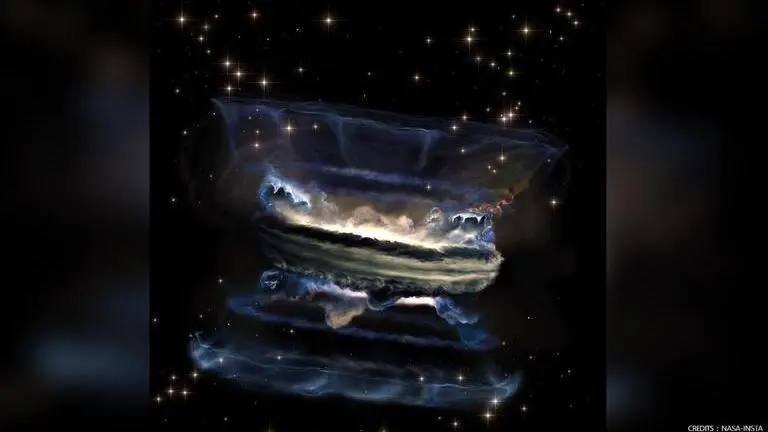Updated 4 July 2021 at 16:42 IST
NASA shares image of ‘tsunami in space' as gases escape supermassive black hole
Strong winds driven by X-ray radiations storm out of the central region of blackhole in what’s called an ‘outflow’ that appear like the tsunami, explains NASA.
- Science News
- 4 min read

In a rare discovery, scientists have found “tsunami-like” eruptions in space, a phenomenon that generally triggers drumbeat of waves that displace the oceanic water here on the Earth. Using the computer simulations, researchers at NASA detected a ‘tsunami of gas’ escaping the gravitational pull of a supermassive black hole.
“What governs phenomena here on Earth are the laws of physics that can explain things in outer space and even very far outside the black hole,” explained Daniel Proga, astrophysicist at the University of Las Vegas, Nevada in a NASA-funded study published in The Astrophysical on July 3.
Separately, NASA also took to its official Instagram handle to post the ‘unthinkable’ image of the a supermassive black hole enshrouded in dust, with strange features in nearby gas. “High-energy X-rays from the disk surrounding the black hole interact with this gas and give rise to two unusual features: Tsunamis that is the light blue "waves" above disk and a Kármán vortex street orange in colour,” NASA separately explained the features of the photograph in a release. Furthemore, the space administration revealed that the computer simulations show that these ‘tsunami-like’ phenomena occurring in a supermassive black hole would be extremely large, on the scale of light-years.
NASA stated, that at approximately the distance where the supermassive black hole loses its grip on the surrounding matter, there exists a relatively cool atmosphere. This is precisely where the supermassive black hole’s rapidly spinning disk forms waves, in likeness to the one observed above the oceanic surface when tsunami rises. “When interacting with hot winds, which can be 10 times hotter than the sun, these waves can steepen into spiralling vortex structures that can reach a height of 10 light-years above the disk,” NASA wrote alongside the post, unravelling the phenomenon.
[Credit: NASA]
Advertisement
'Subsea volcanic eruption' of space explained
According to NASA, instead of a subsea volcanic eruption causing tsunamis, the hot pockets of gas in the outskirts of the accretion disk of the supermassive blackholes initiate the outward propagating disturbances, which form the gigantic structures. Supermassive blackhole’s active galactic nuclei [it’s centre] has relativistic jets at their poles as well as strange thick shroud of material that blocks the nucleus activity. There’ s a plasma that circulates above this disk, with incredible bright X-rays.
“Strong winds, at least in part driven by this radiation, storm out of this central region in what’s called an ‘outflow’ that appear like the tsunami which may be apparently caused due to effects of these central X-rays,” explains NASA.
In addition to launching outflows, these X-ray irradiation may also be associated with the various populations of denser regions called “clouds.”
Advertisement
“These clouds are ten times hotter than the surface of the Sun and moving at the speed of the solar wind, so they are rather exotic objects that you would not want an airplane to fly through,” said lead author Tim Waters, a postdoctoral researcher at UNLV who is also a guest scientist at Los Alamos National Laboratory.
Simulations show for the first time that the area where the supermassive black hole loses its grip on the surrounding matter, and the relatively cool atmosphere of the spinning disk has “waves like structures” similar to the surface of the ocean. When these waves interact with hot winds, they spiral into the vortex structures that can reach a height of 10 light-years above the disk. This results in the formation of the tsunami-shaped clouds which are no longer influenced by the black hole’s gravity, as they are at a distance twice farther than the sun and its closest star, an estimated 4 light-years.
"As the gas particles form a gigantic tsunami-like structure, it blocks the accretion disk wind, spawning a separate pattern of spiral structures known as a Kármán vortex street, with each vortex spanning a light-year in size. The phenomenon is named for physicist Theodore von Kármán, one of the founders of NASA’s Jet Propulsion Laboratory," explains NASA.
Published By : Zaini Majeed
Published On: 4 July 2021 at 16:41 IST

